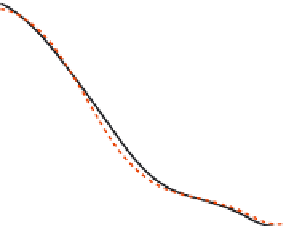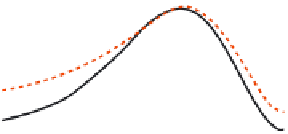Biomedical Engineering Reference
In-Depth Information
90
40
80
35
Left knee
Right knee
70
Left hip
Right hip
30
60
25
50
40
20
30
15
20
10
10
5
0
0
-10
0 102030405060708090100
0 10 20 30 40 50 60 70 80 90100
% Lifting motion
% Lifting motion
(A)
(B)
20
30
18
Left shoulder
Right shoulder
Left elbow
Right elbow
25
16
14
20
12
10
15
8
10
6
4
5
2
0
0
0 102030405060708090100
0 10 20 30 40 50 60 70 80 90100
% Lifting motion
% Lifting motion
(C)
(D)
FIGURE 8.13
Joint torque profiles for dynamic box-lifting using weight sum performance measure:
(A) knee extension torque, (B) hip extension torque, (C) elbow flexion torque,
(D) shoulder flexion torque.
34 years. The subjects had no history of musculoskeletal problems and were rea-
sonably fit. Their participation was voluntary, and a written informed consent, as
approved by the University of Iowa Institutional Review Board, was obtained
prior to testing. During the lifting trials, each subject lifted at a self-selected
speed. The experimental data for each subject were also normalized by dividing
the cycle time, which is defined as the time duration to lift the object from the
initial position to the final position, to directly evaluate the determinants at a per-
centage of a lifting cycle. For each subject, the timescale was normalized such
that the initial posture occurred at time
t
5
0 and the final posture occurred at
time
t
5
1. The lifting motion is validated with experimental determinants as
shown in
Figure 8.14
.











































































































































































Search WWH ::

Custom Search